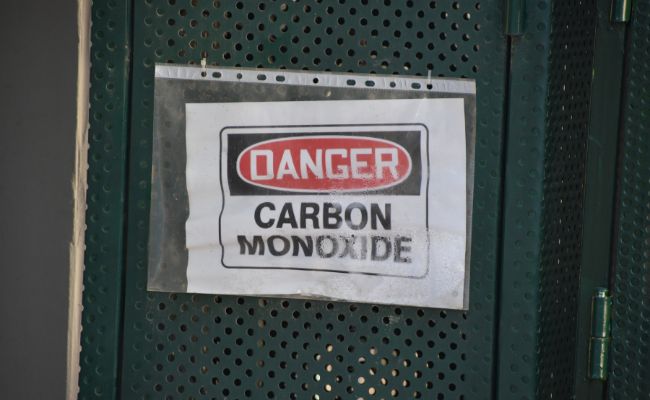

Published on 29/07/2022

Gases are essential components on board any sea-going vessel – whether used as fuel or for heating and power. Although they are highly useful, the presence and management of gases can also be incredibly dangerous. Gases become even more hazardous in a marine environment where confined spaces are commonplace – when stored and used on sea-going vessels, the risk of illness and fatality often increases ten-fold.
One of the most well-known and deadly gases commonly found on board ships is carbon monoxide. Carbon monoxide is one of the most common types of fatal air poisoning worldwide – it results in over 100 million accidental deaths per year and was amongst the US Coastguard’s top five known causes of death among boaters in 2017. For this reason it’s vitally important that this useful yet potentially deadly gas is properly managed on board, with early detection solutions installed for complete peace of mind.
Please view our range of portable gas detectors and fixed gas detection systems.
Carbon monoxide on board sea-going vessels
Carbon monoxide has a diverse range of uses and can be emitted from a variety of sources on board sea going vessels – from heating systems and gas stoves to generators and engines. Carbon monoxide can also be produced through the incomplete burning of carbon-based fuels, such as gas, oil, wood and coal. Some of the most common sources of carbon monoxide leaks on board sea-going vessels include:
*Faulty, badly maintained or misused equipment and appliances (such as boilers, heating appliance and portable gas stoves)
*Escaped flue gases from solid-fuel stoves
*Exhaust fumes produced by a vessel’s engine or generator
*Blocked ventilation or any issue resulting in short supply of air fuels providing the right amount of oxygen to burn safely
Why is carbon monoxide so deadly?
As carbon monoxide builds up within a confined space it poses a serious risk to life if not detected early enough. When carbon monoxide enters the body it replaces oxygen in the bloodstream, preventing the blood from bringing oxygen to vital organs including the heart and brain.
Often referred to as the ‘silent killer’, carbon monoxide is odourless and colourless meaning it cannot be felt or identified via the senses alone, so its presence in larger volumes can quickly kill when inhaled in high quantities.
Although carbon monoxide poisoning occurs rapidly and without warning, some key symptoms to be aware of include:
*Headaches
*Tiredness
*Nausea
*Dizziness/feeling light-headed
*Weakness
*Memory loss
*Loss of balance
It’s also important to be aware of the effects of prolonged exposure to smaller amounts of carbon monoxide – which can pose equally serious harm to health. In extreme cases paralysis and brain damage can occur.
Acute carbon monoxide poisoning often occurs at night when crew members are sleeping, unaware of the effects of a gas leak. With no warning or chance of waking, this is an especially concerning risk for vessels with live-in crews or passengers.
Managing carbon monoxide in a marine environment
There are many ways you can avoid a carbon monoxide incident on board your ship. Some key preventative measures you can take to avoid potentially deadly carbon monoxide leaks include:
*Ensure all fuel-burning devices are properly installed and maintained
*Allow proper ventilation including checking that air flow systems are not blocked or obstructed
*Ensure appliances and engines are regularly checked
*Use any fuel-burning equipment correctly at all times
*Don’t allow engine fumes to penetrate cabin space
*Install gas detectors to raise the alarm in a timely manner when leaks occur, and ensure they are properly checked and maintained on a regular basis
*Know the signs of carbon monoxide poisoning and how to react – this could potentially save a life
Why is rapid and reliable gas detection important?
Sensible precautions can prevent the risk of death and serious illness or injury as a result of a noxious gas leak. Gas detectors are one of the primary protective systems any sea-going vessel needs to employ to guard against potentially fatal carbon monoxide leaks.
It’s important to consider the size of your vessel and vessel type when installing gas detectors – normally a mixture of fixed and portable devices are required to provide complete coverage.
Our Triple C Portable Gas Detector is designed with an uncompromising approach to safety in mind, featuring cutting-edge infra-red technology to protect against sensor poisoning and drift. Longwearing, robust and reliable, it’s the only detector on the market designed with 3 years’ continuous battery life – no need for charging or maintenance. Triple C is also fully customisable – so you can adjust it to suit the role required.
Our Marine 4 Gas Detection Monitor can also be used for the early detection of carbon monoxide along with oxygen, methane and hydrogen sulphide. Our portable and fixed gas detection solutions can be used in conjunction with one another to provide a 360 solution and watertight protection. Employing our world-first, top-class detectors as a first line of defence against potentially deadly gas leaks ensures you’ll be fully compliant and ensure the continued safety of your crew, for complete peace of mind and security.
For tailored advice on gas leak prevention or to learn more about our gas detection devices, speak to us today.